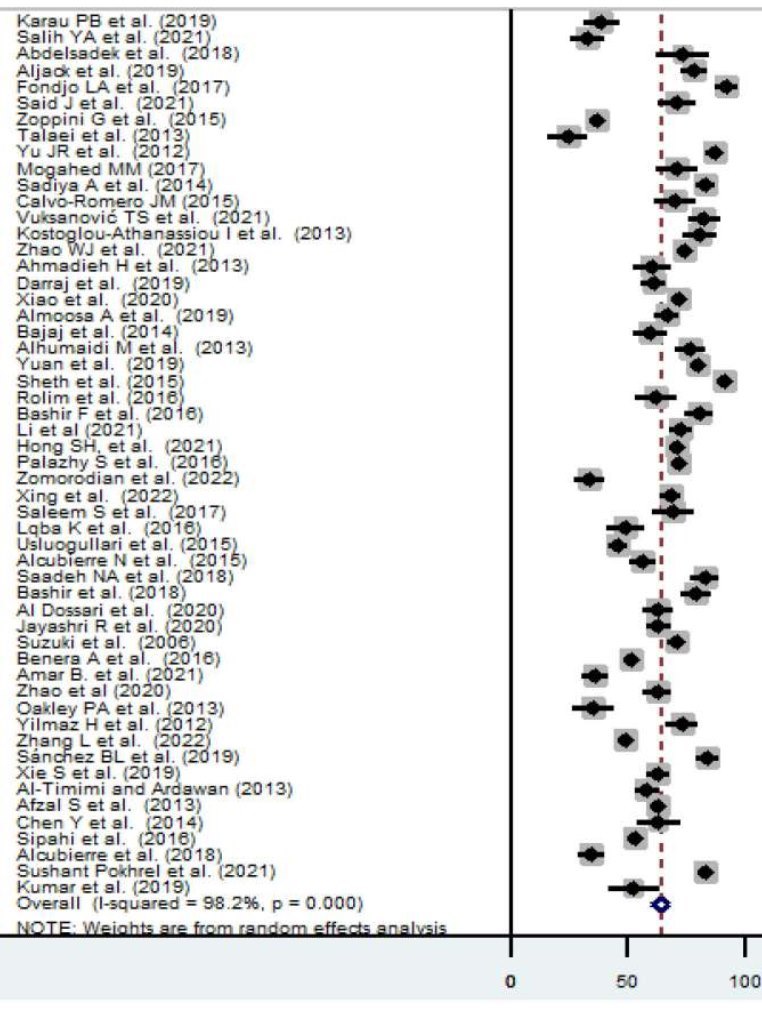Type 2 Diabetes treated by Vitamin D (often 50,000 IU weekly) – meta-analysis
Serum and supplemental vitamin D levels and insulin resistance in T2DM populations: a meta-analysis and systematic review
Xingxing Lei, Qian Zhou, Yanmei Wang, Shunlian Fu, Zinan Li & Qiu Chen
Scientific Reports volume 13, Article number: 12343 (2023)

Observational studies have shown a negative correlation between Vitamin D level and the likelihood of developing insulin resistance (IR) and/or diabetes over time, yet evidence remains inconsistent. In this meta-analysis and systematic review, we strive to define the potential association between serum or supplemental Vitamin D Levels and insulin resistance respectively, as well as the contribution of Vitamin D to type 2 diabetes, and to summarize the biologic plausibility of Vitamin D. Four databases (PubMed, Embase, Cochrane Library, and Web of Science) were searched for this Systematic Literature Review (SLR) to find appropriate observational studies and clinical trials published in English through to July 2022. EndNote (version X9) is used to manage the literature search results. We calculated Standard Mean Differences (SMDs) and Risk Ratios (RRs) with their 95% Confidence Intervals (CIs), separately, for continuous and dichotomous outcomes. The correlation coefficients were normalized to z values through Fisher’s z-transformation to calculate the relevant statistics. Meta-analyses were carried out for all comparisons, based on a random-effects pooling model. Data analysis was performed using RevMan (version 5.3) and STATA (version 15.1). All statistical tests were two-sided, with P < 0.05 were regarded as significant. In our current meta-analysis, there are 18 RCTs and 20 observational studies including 1243 and 11,063 participants respectively. In the overall analysis, the diabetic with Vitamin D supplement treatment group showed significantly improve serum insulin (SMD = − 0.265, 95% CI − 0.394 to − 0.136, P < 0.05), glucose (SMD = − 0.17, 95% CI − 0.301to − 0.039, P < 0.05) and HOMA-IR (SMD = − 0.441, 95% CI − 0.582 to − 0.3, P < 0.05) compared with the routine treatment group. Correlation analysis results showed that all three outcomes were significantly correlated in a negative manner with raised Vitamin D (
insulin: r = − 0.08 95% = − 0.12 to − 0.04;
glucose: r = − 0.06 95% = − 0.11 to − 0.01;
HOMA-IR: r = − 0.08 95% = − 0.09 to − 0.06).
Results of overall analysis proved that vitamin D has shown significant effect on regulates insulin resistance, and there is a significant inverse association between serum Vitamin D level and IR. Vitamin D supplementation is expected to be integrated into conventional medical approaches to prevent type 2 diabetes and to mitigate the burden of diabetes for individuals and society.
📄 Download the PDF from VitaminDWiki
Vitamin D deficiency and its associated factors among patients with type 2 diabetes mellitus: a systematic review and meta-analysis - Oct 2023
BMJ Open . 2023 Oct 5;13(10):e075607. doi: 10.1136/bmjopen-2023-075607.
Mitku Mammo Taderegew 1, Gashaw Garedew Woldeamanuel 2, Alemayehu Wondie 2, Atsede Getawey 2, Abera Nesiru Abegaz 2, Fentahun Adane 3


Objective: The study intended to assess the pooled prevalence of vitamin D deficiency (VDD) and its associated factors among patients with type 2 diabetes mellitus (T2DM).
Design: The Preferred Reporting Items for Systematic Reviews and Meta-Analyses guidelines were employed to plan and conduct this systematic review and meta-analysis.
Data sources: PubMed, Medline, Google Scholar, Web of Science, Science Direct and the Worldwide Science database were searched from their inception to 31 January 2023.
Methods: Data were extracted using a standardised data extraction format prepared in Microsoft Excel. The inverse variance (I2) test was used to evaluate the presence of heterogeneity across the included studies. To identify the possible source of heterogeneity, subgroup analysis was carried out. Funnel plot symmetry, Begg's and Egger's tests were used to evaluate the existence of publication bias. In addition, factors associated with VDD among patients with T2DM were examined. All statistical analyses were carried out with STATA V.14 software.
Results: A total of 54 studies with 38 016 study participants were included in the study. The pooled prevalence of VDD among patients with T2DM was found to be 64.2% (95% CI 60.6% to 67.8%) with a substantial level of heterogeneity (I2=98.2%; p<0.001). Results of the subgroup analysis indicated that the pooled prevalence of VDD among patients with T2DM was highest (70.9%) in African nations and lowest (57.1%) in Middle East countries. Being female (pooled OR (POR) 1.60, 95% CI 1.29 to 1.97), having poor glycaemic control (POR 2.50; 95% CI 1.74 to 3.59), hypertension (POR 1.21; 95% CI 1.08 to 1.36), obesity (body mass index ≥25) (POR 1.68; 95% CI 1.16 to 2.44), dyslipidaemia (POR 2.54, 95% CI 1.37 to 4.73), albuminuria (POR 2.22, 95% CI 1.71 to 2.95), nephropathy (POR 1.58; 95% CI 1.08 to 2.31) and retinopathy (POR 1.48: 95% CI 1.17 to 1.89) were predictors of VDD among patients with T2DM.
Conclusions: More than half of patients with T2DM were suffering from VDD. Being female, having poor glycaemic control, hypertension, obesity, dyslipidaemia, albuminuria, nephropathy and retinopathy were the predictors of VDD among patients with T2DM.
📄 Download the PDF from VitaminDWiki
VitaminDWiki – Overview Diabetes and vitamin D contains
{include}
VitaminDWiki - Meta-analyses of Diabetes
This list is automatically updated
{category}
